
EASL Congress 2023
21-24 June Vienna

|
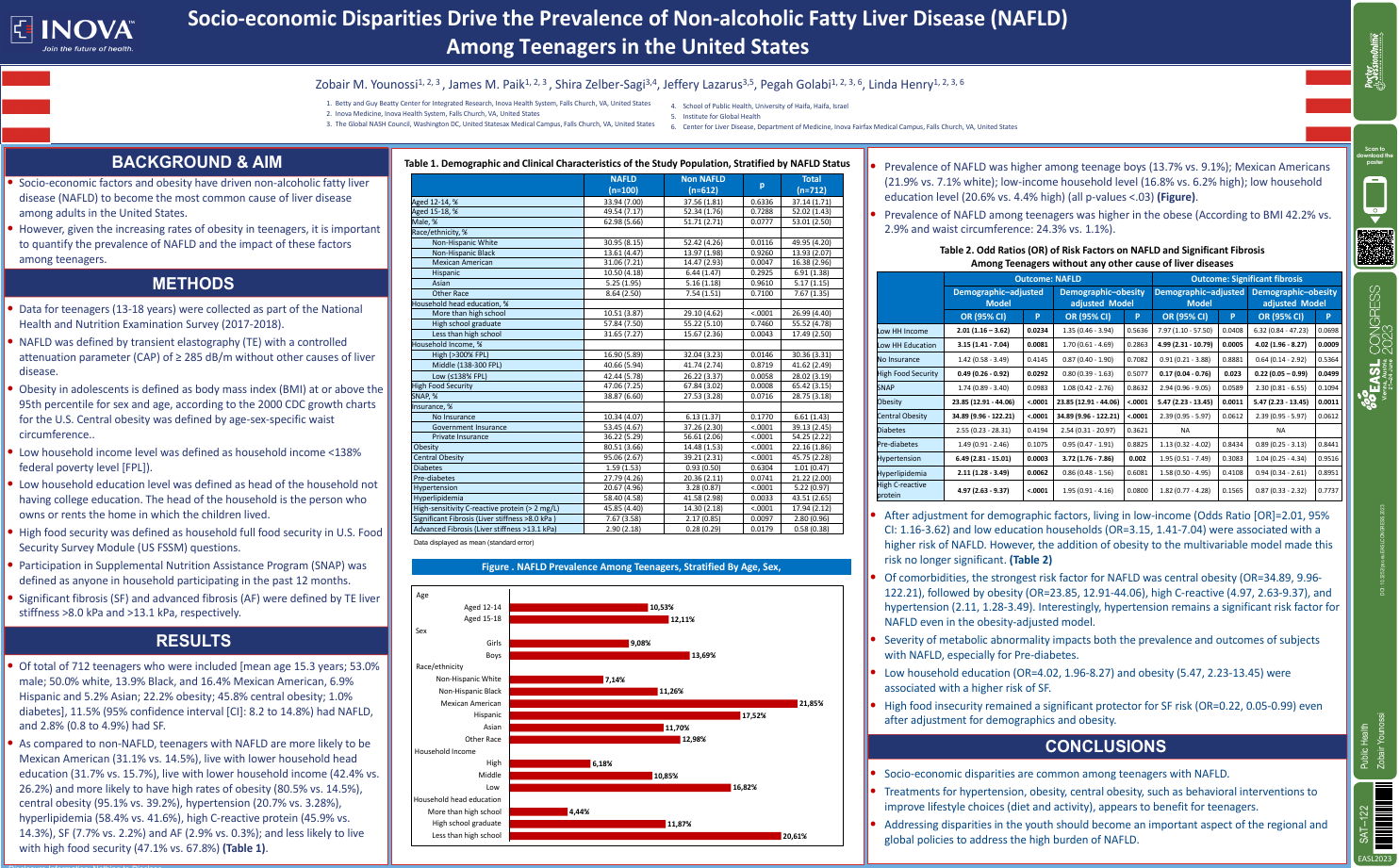
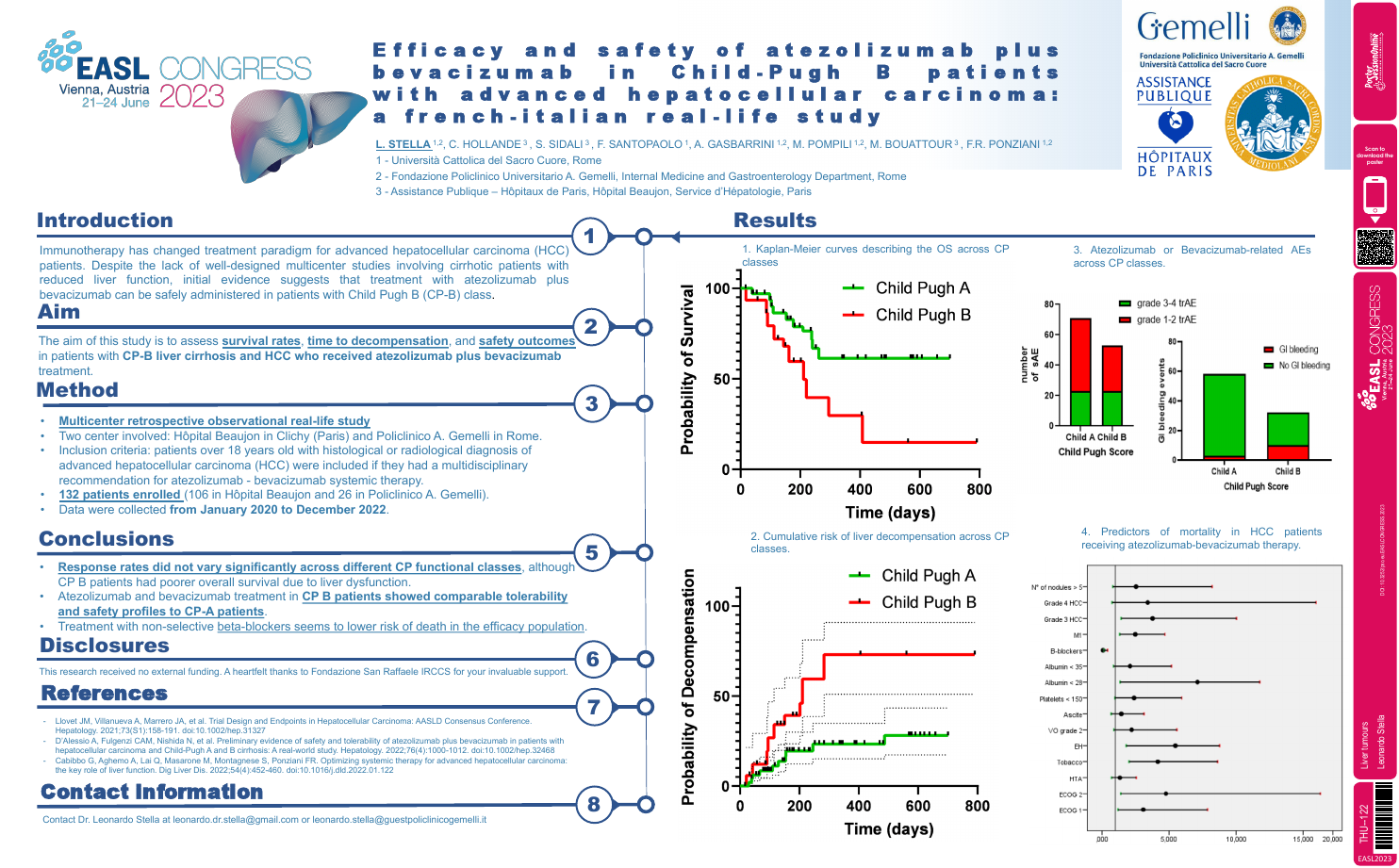
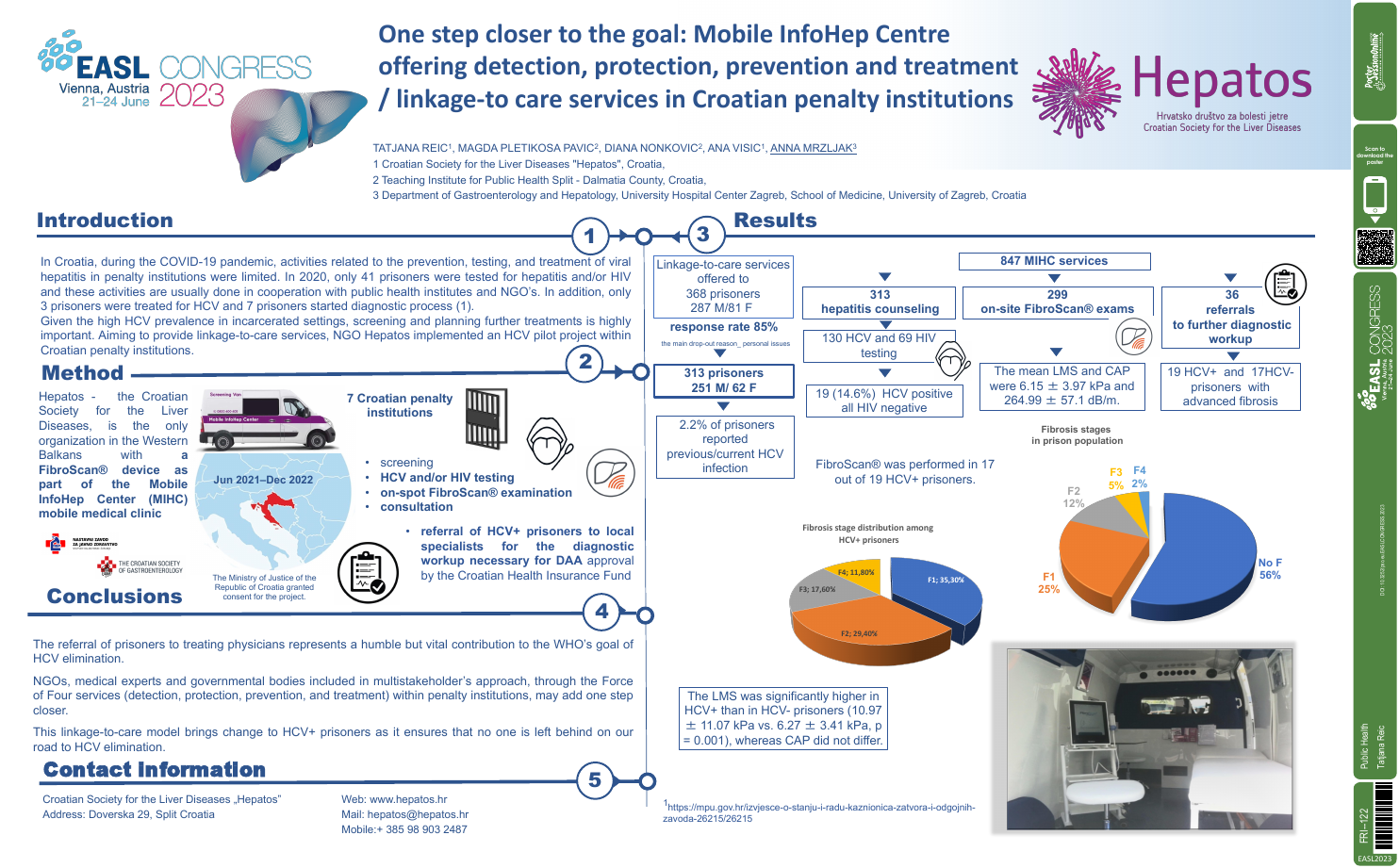
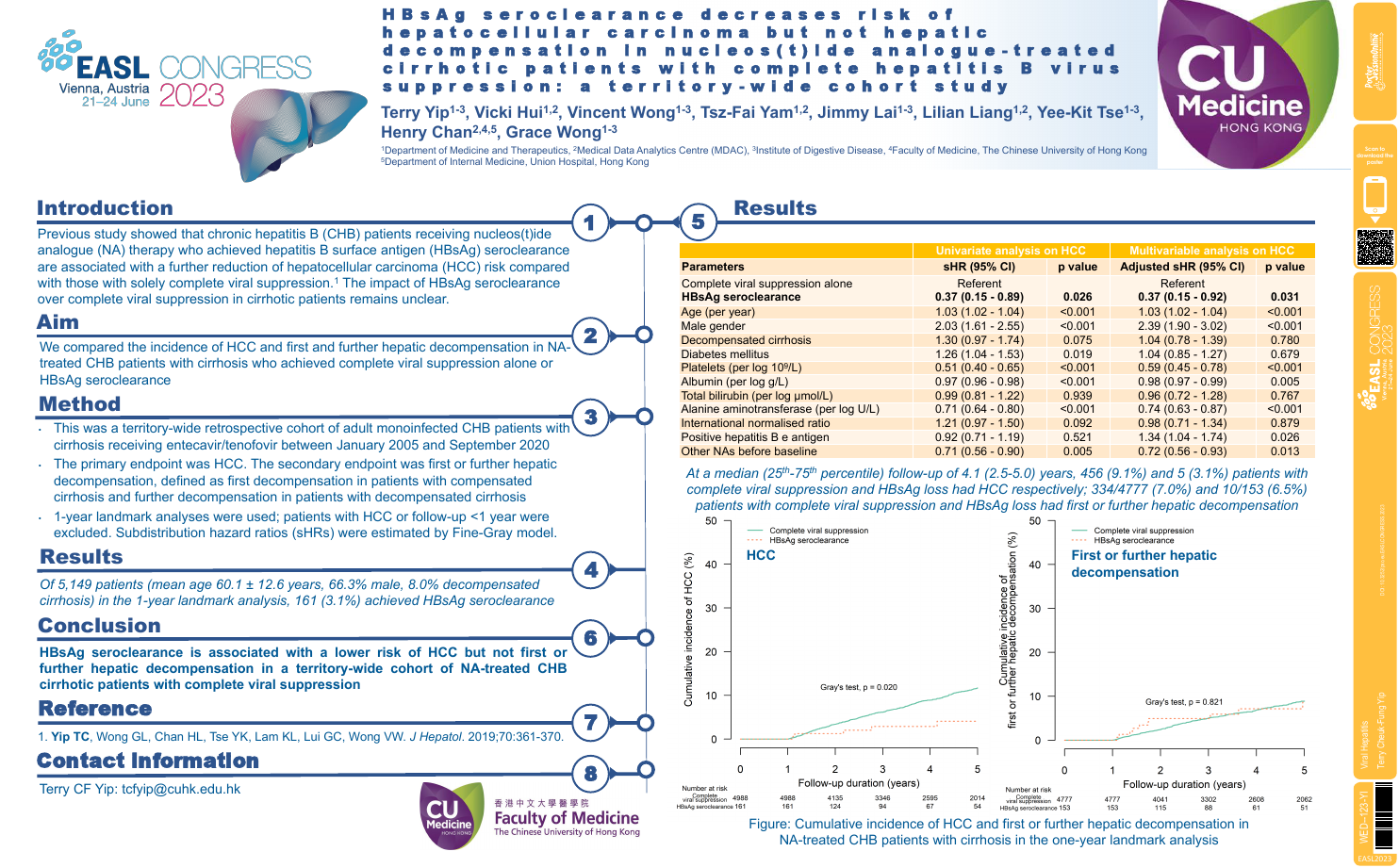
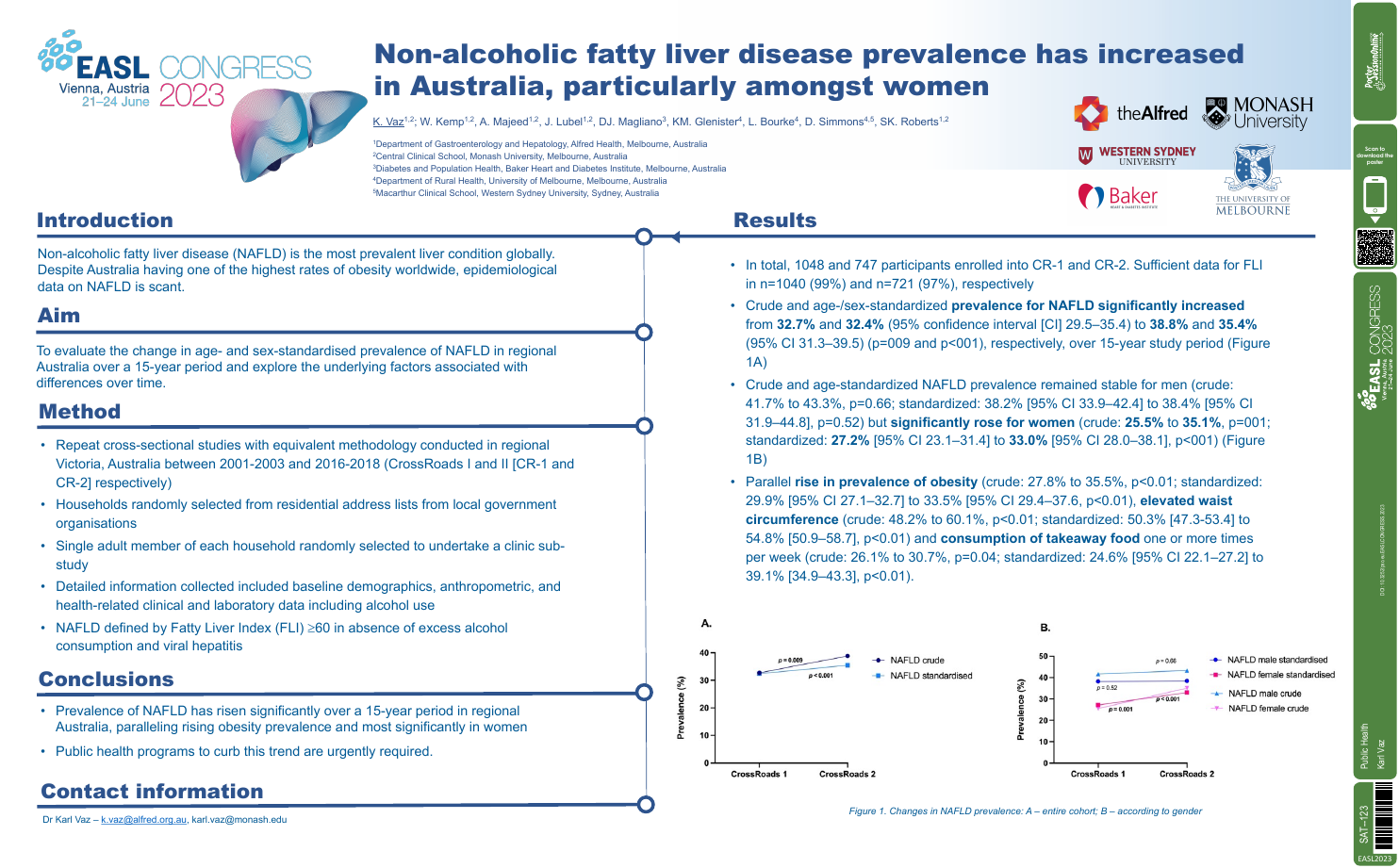
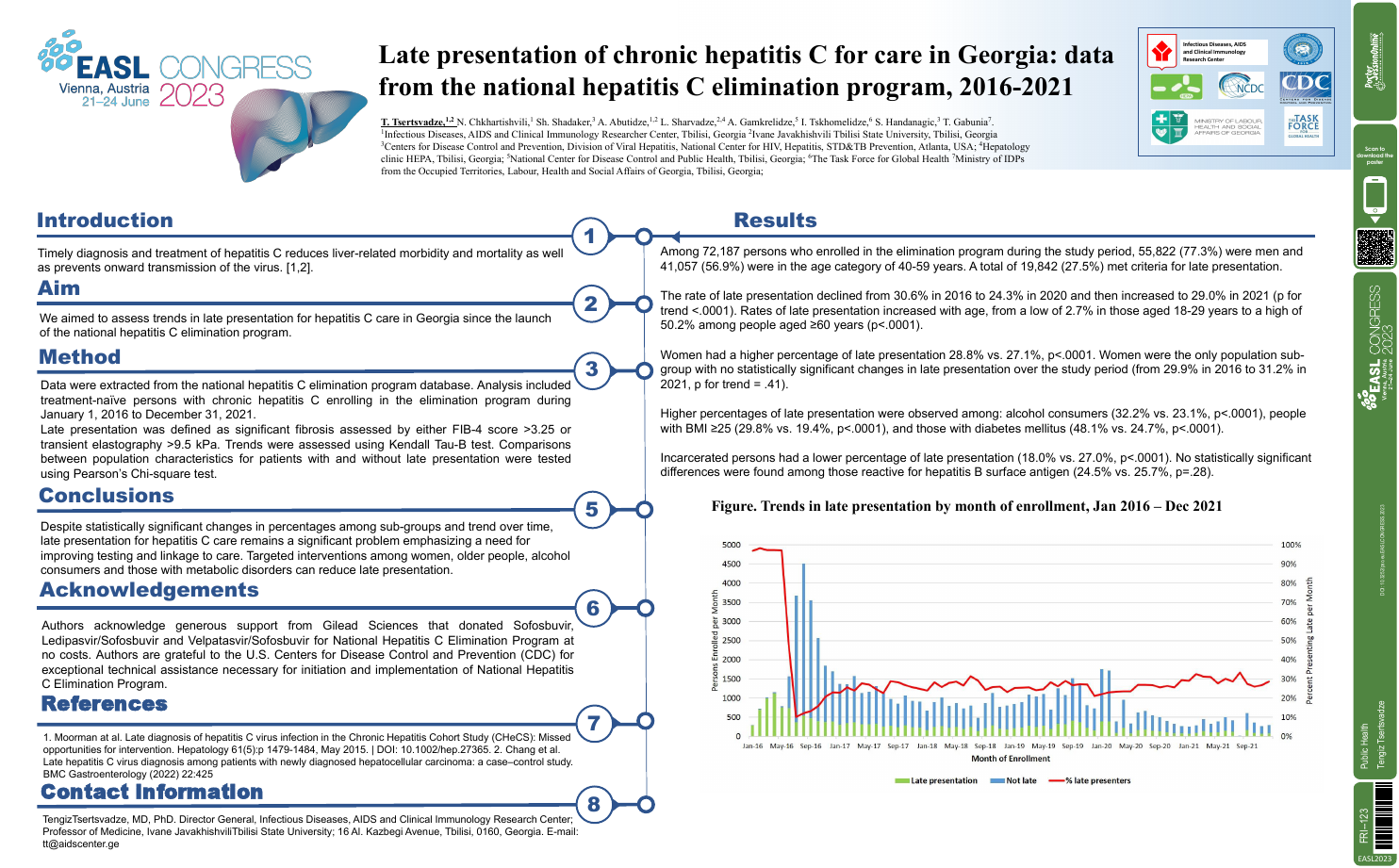
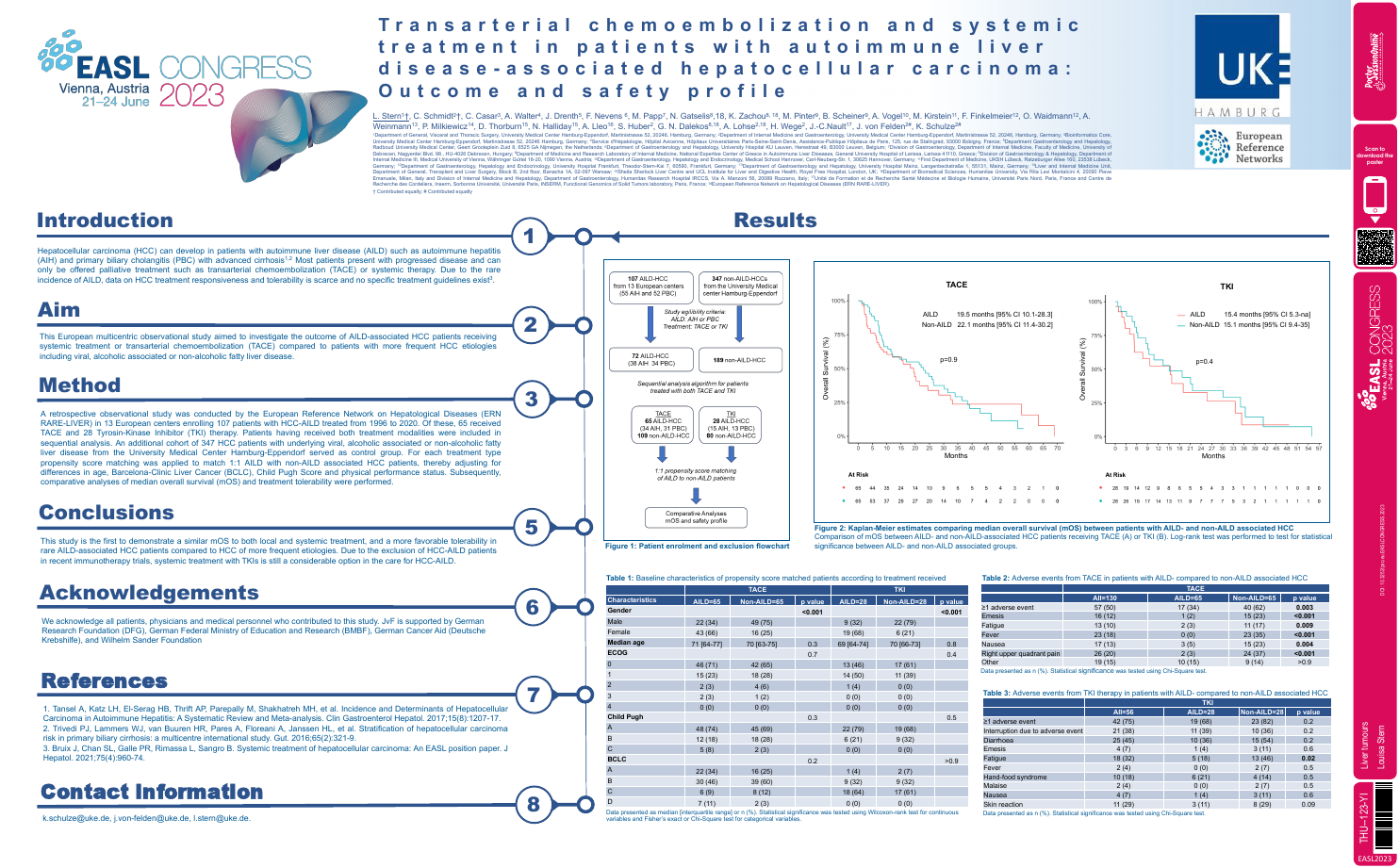
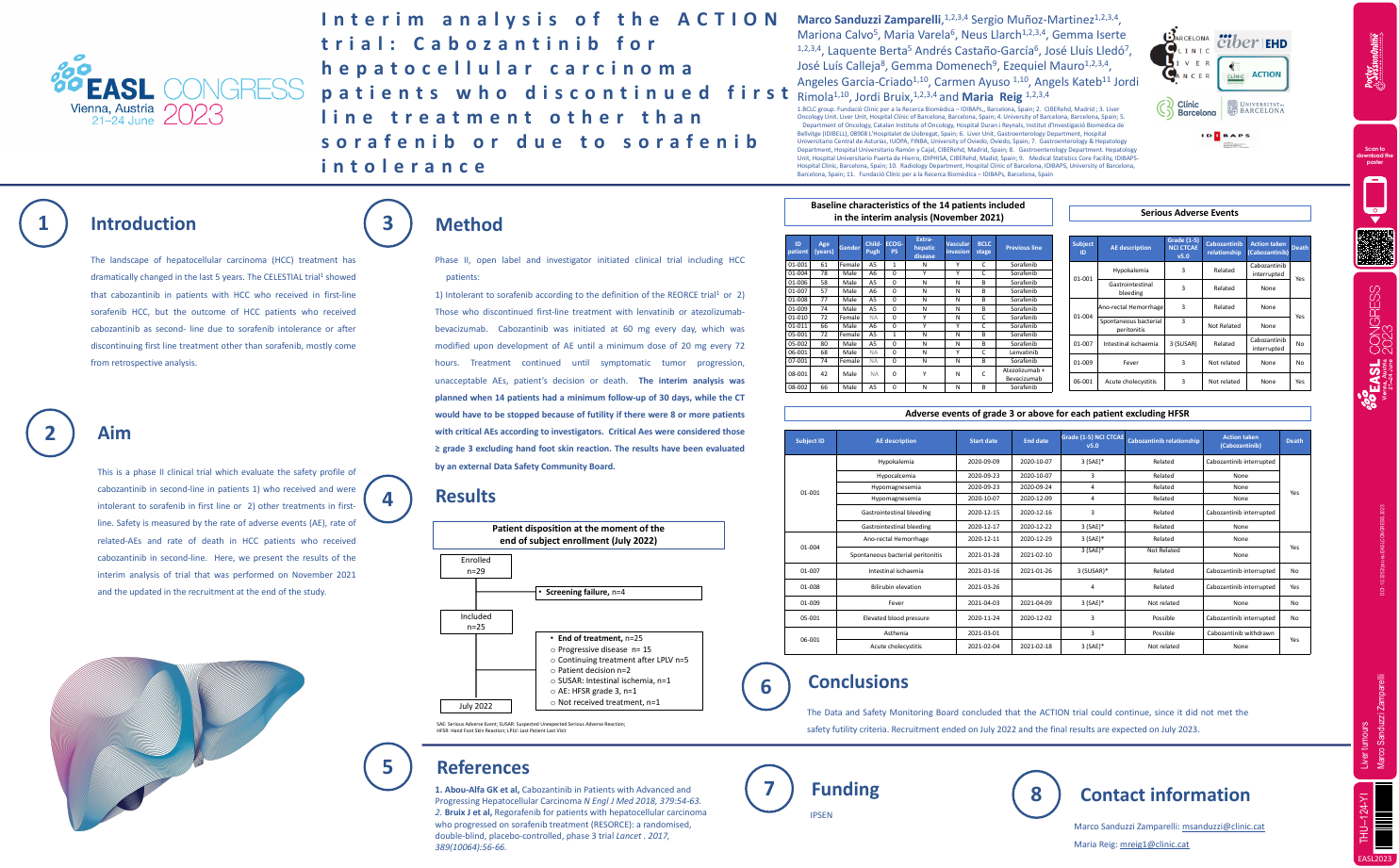
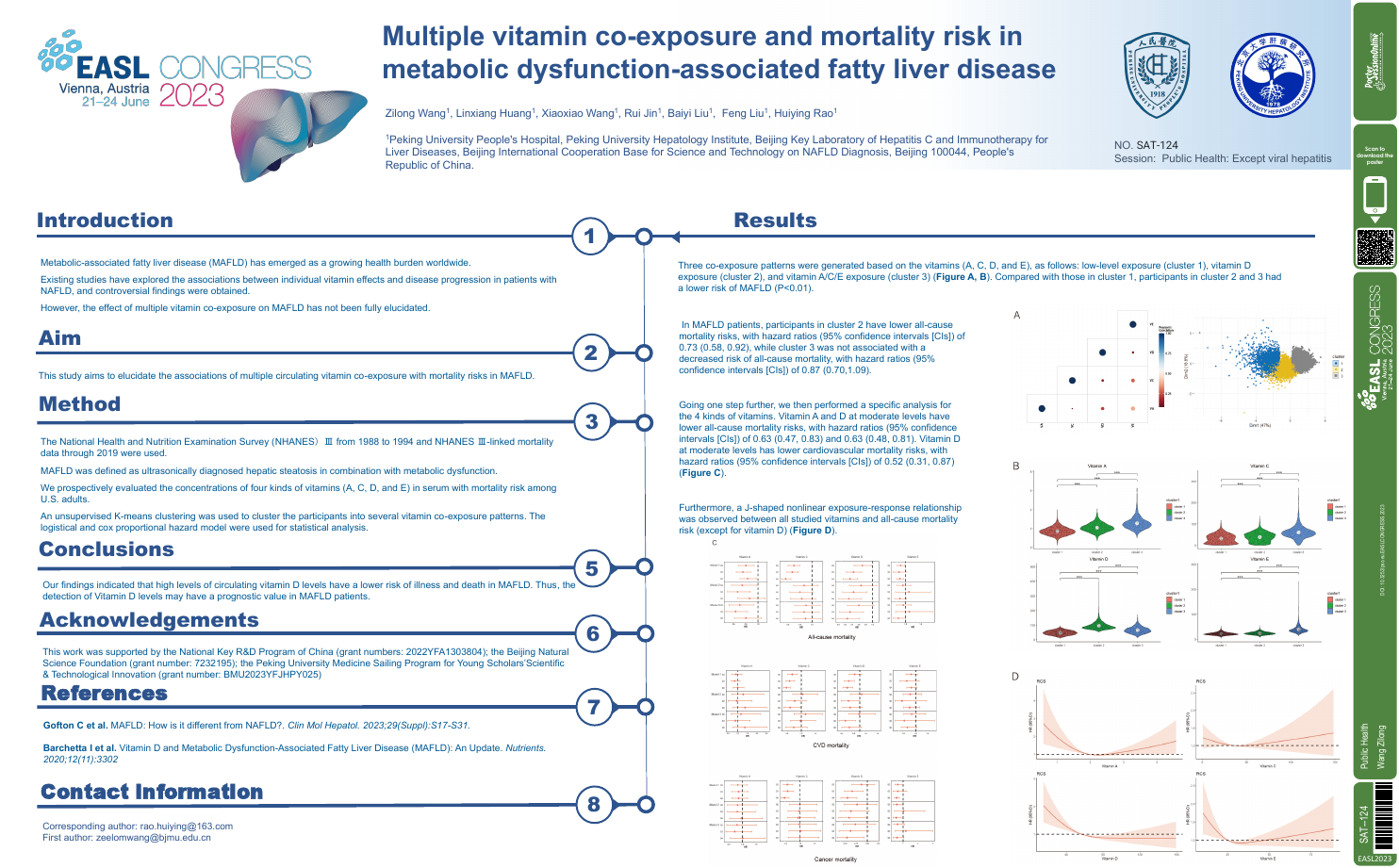
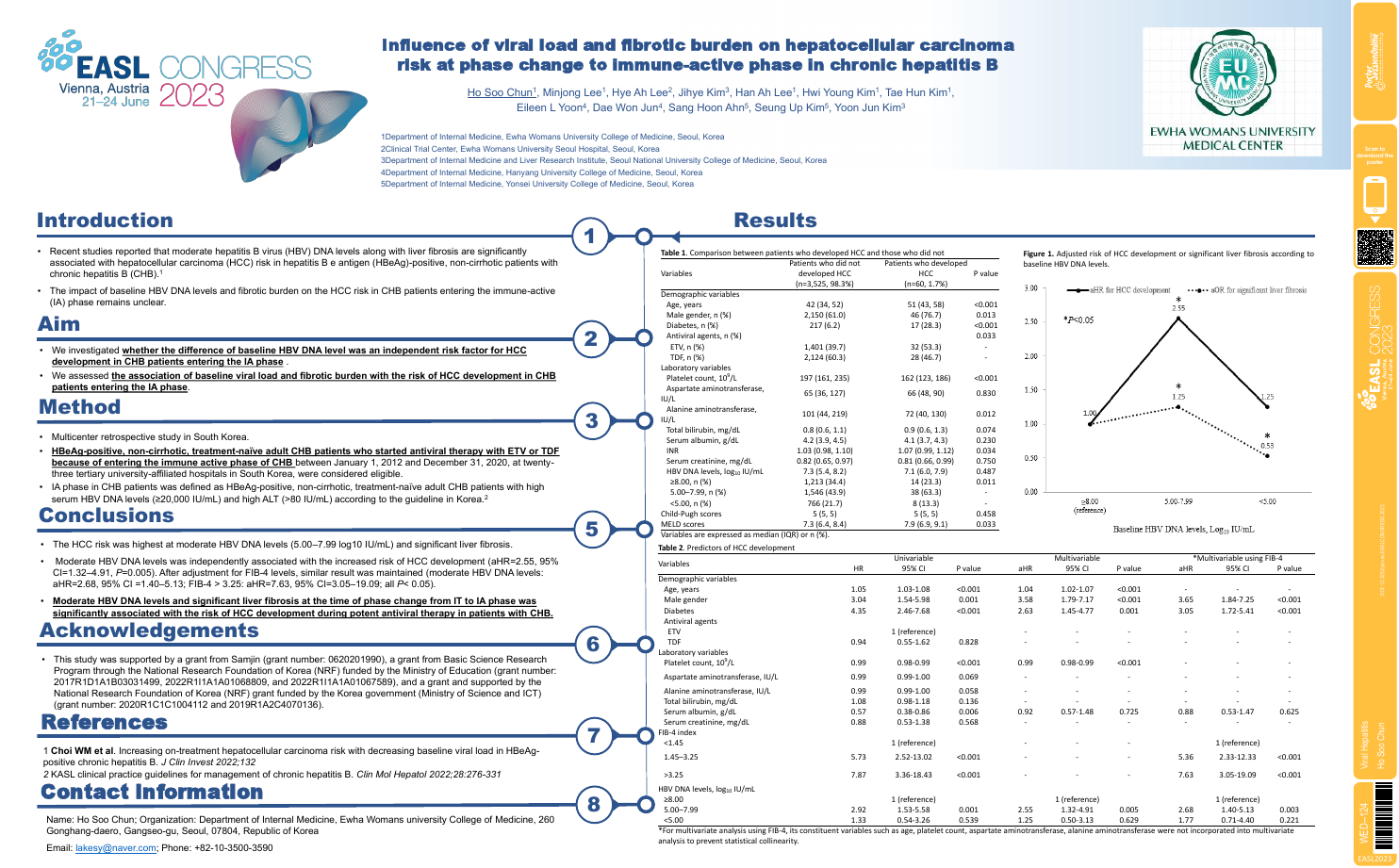
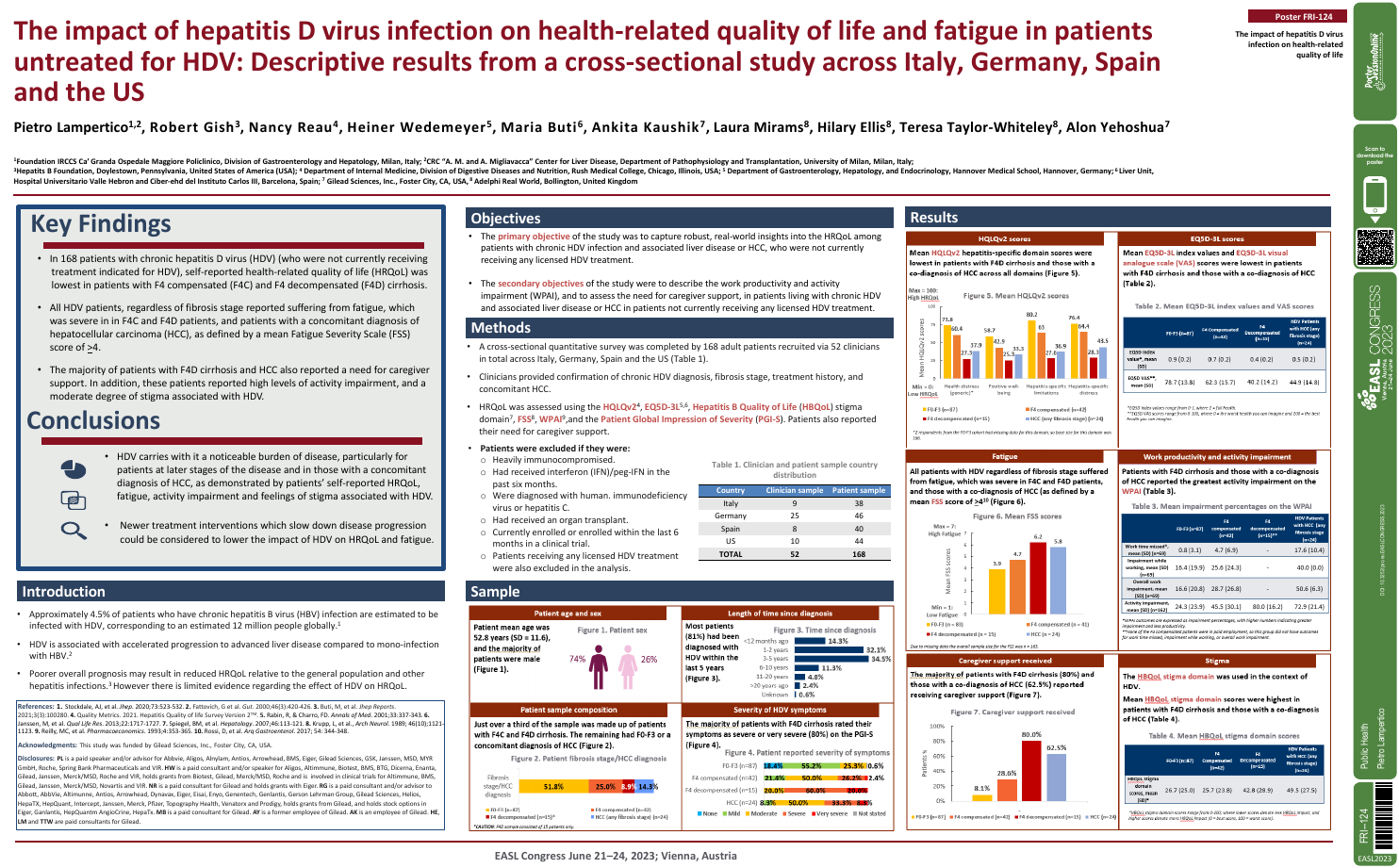
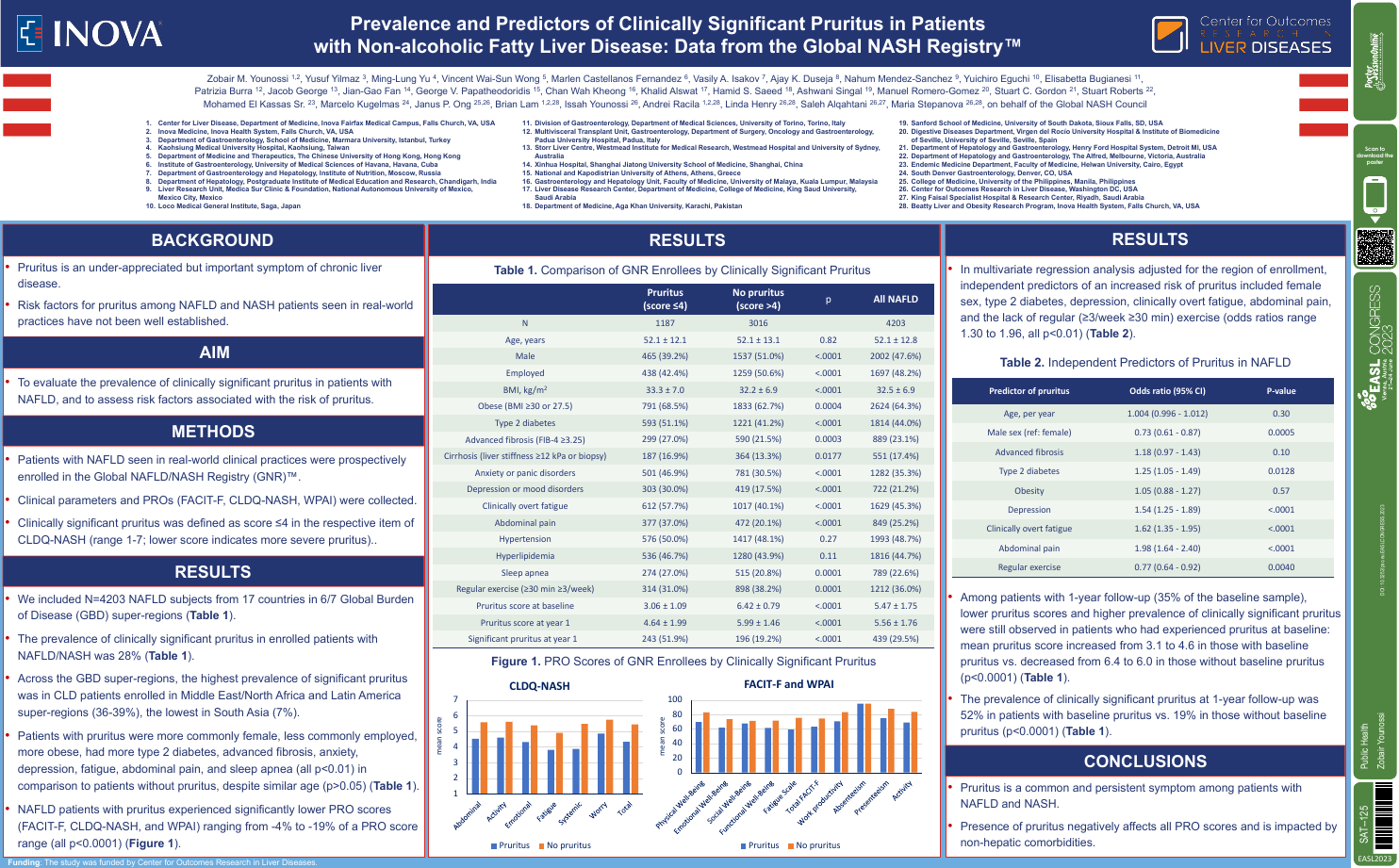
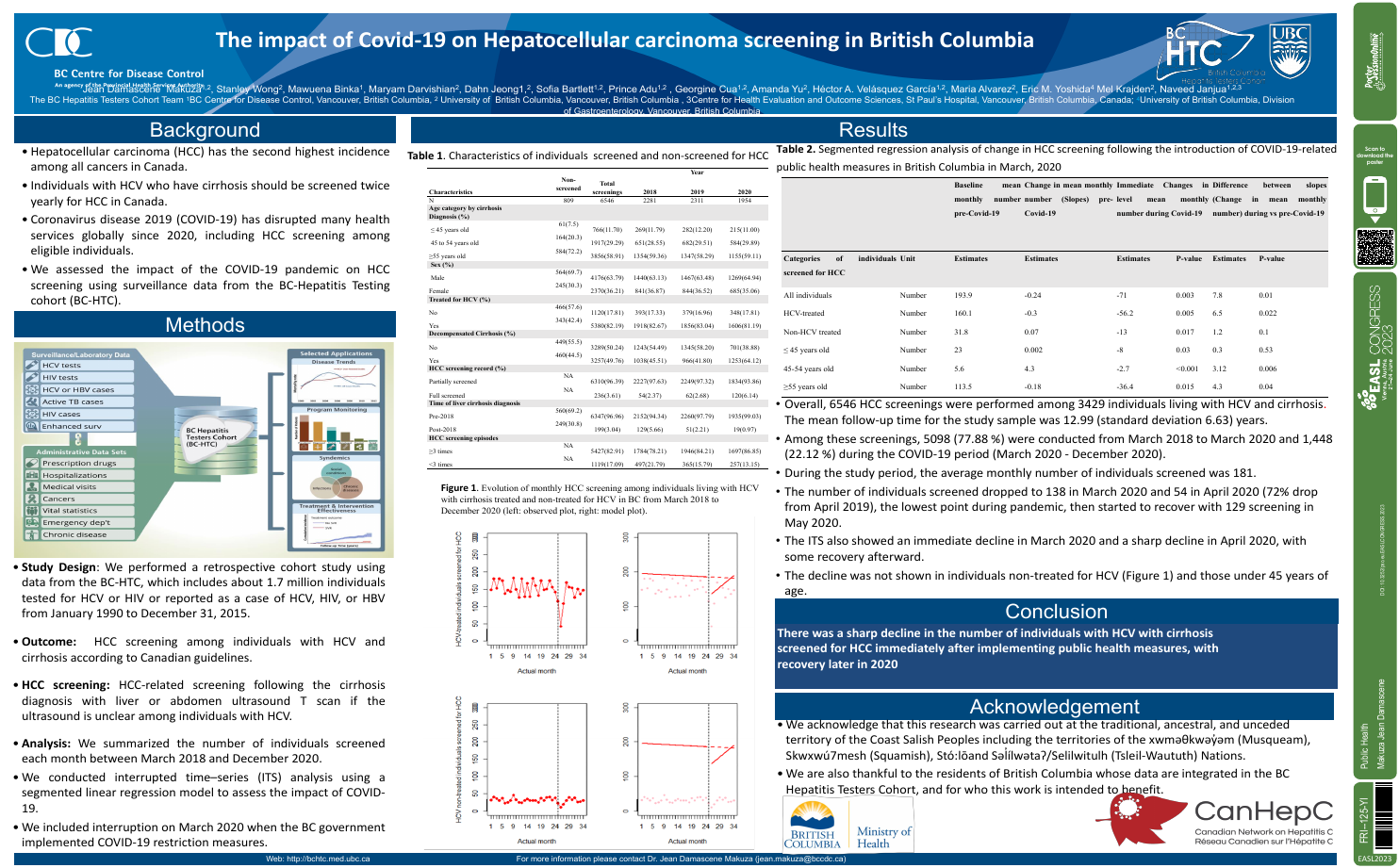
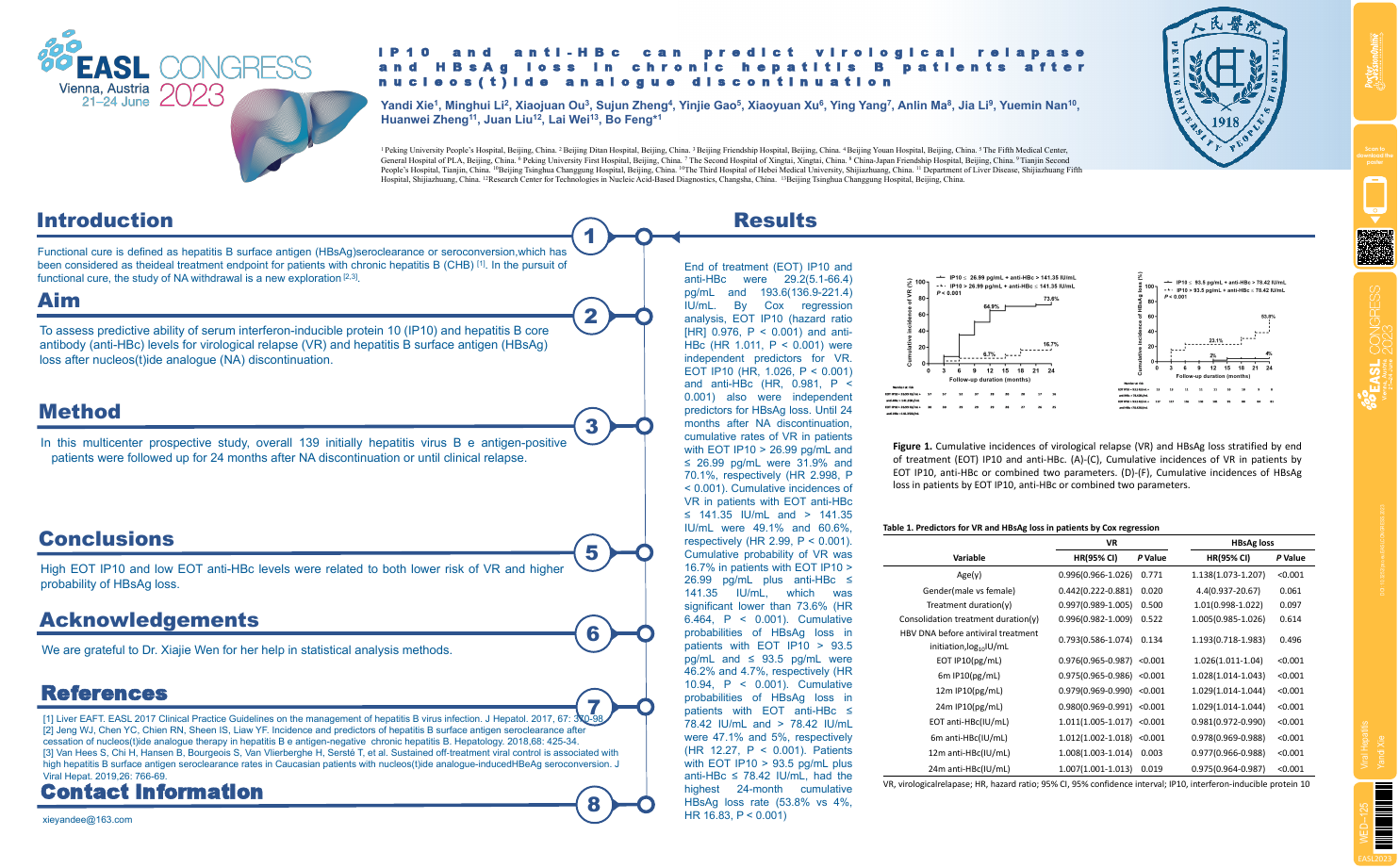
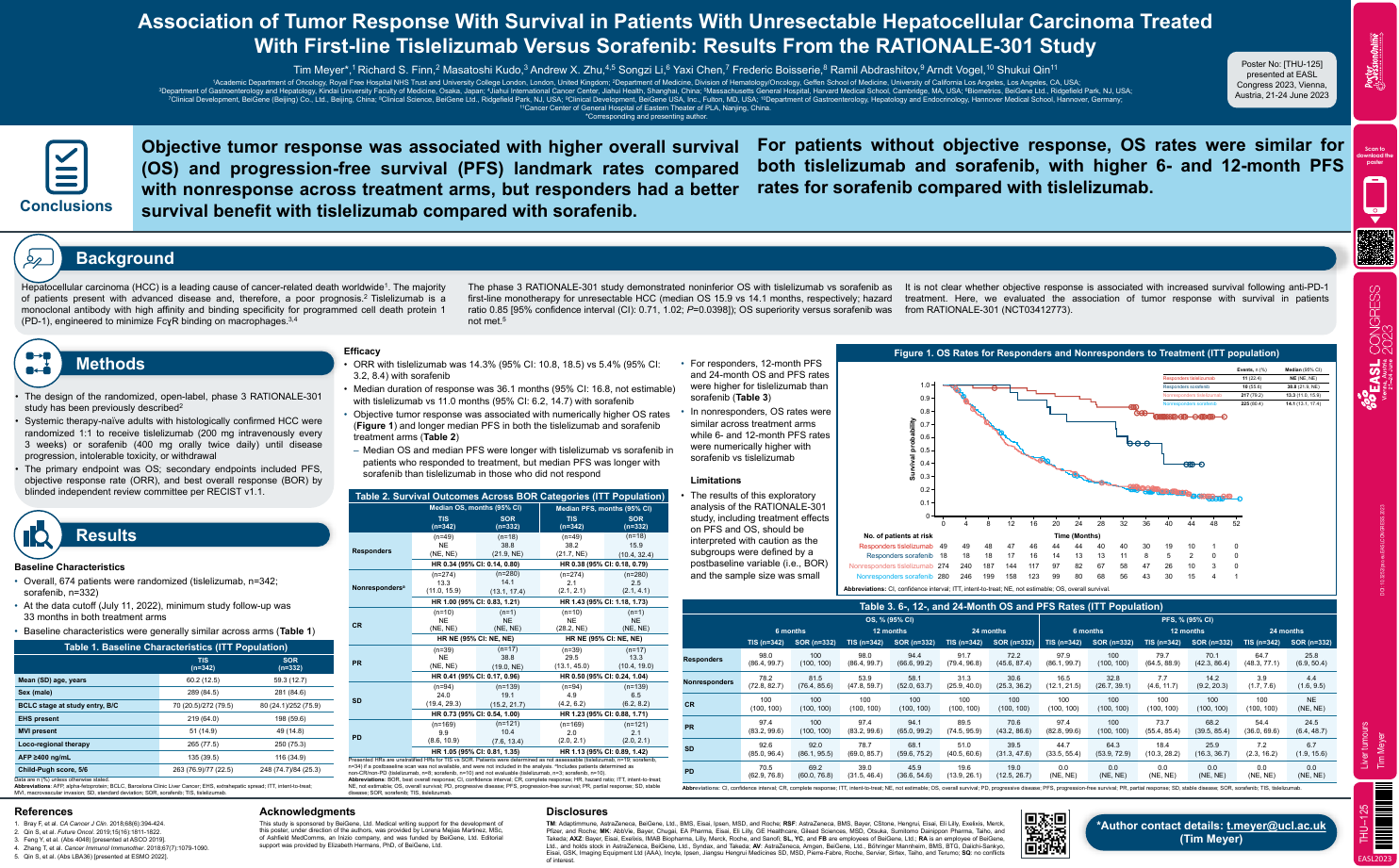
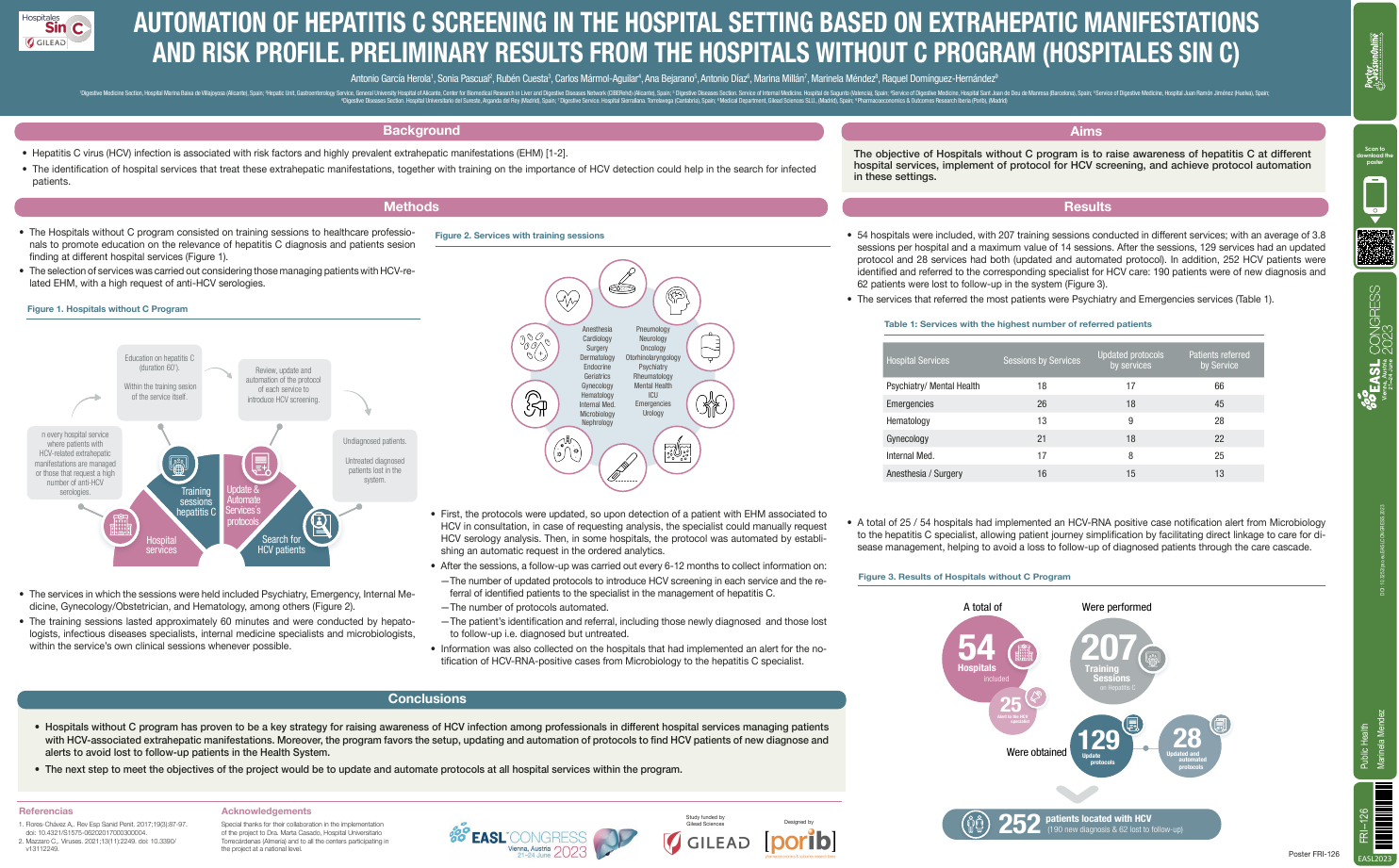
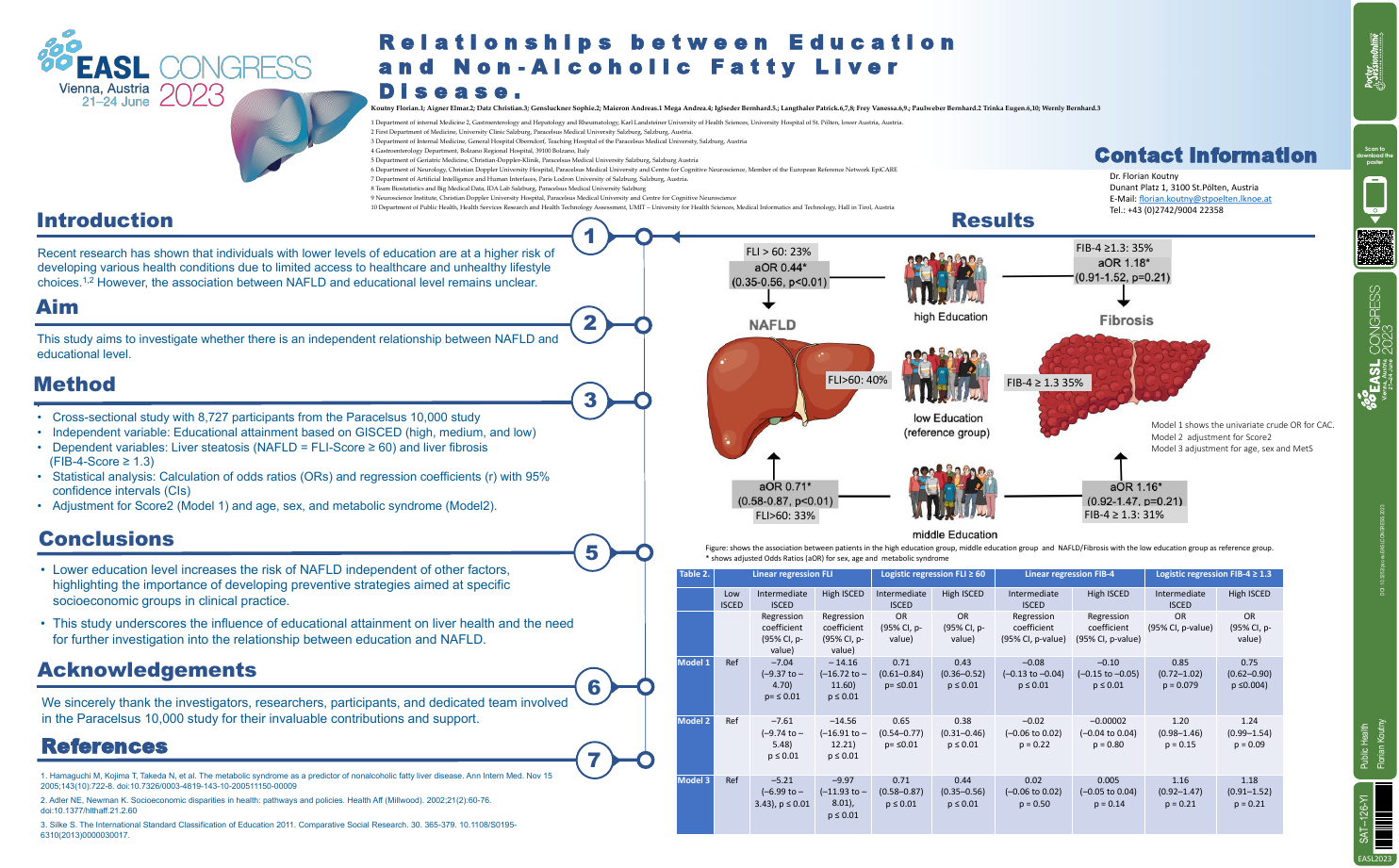
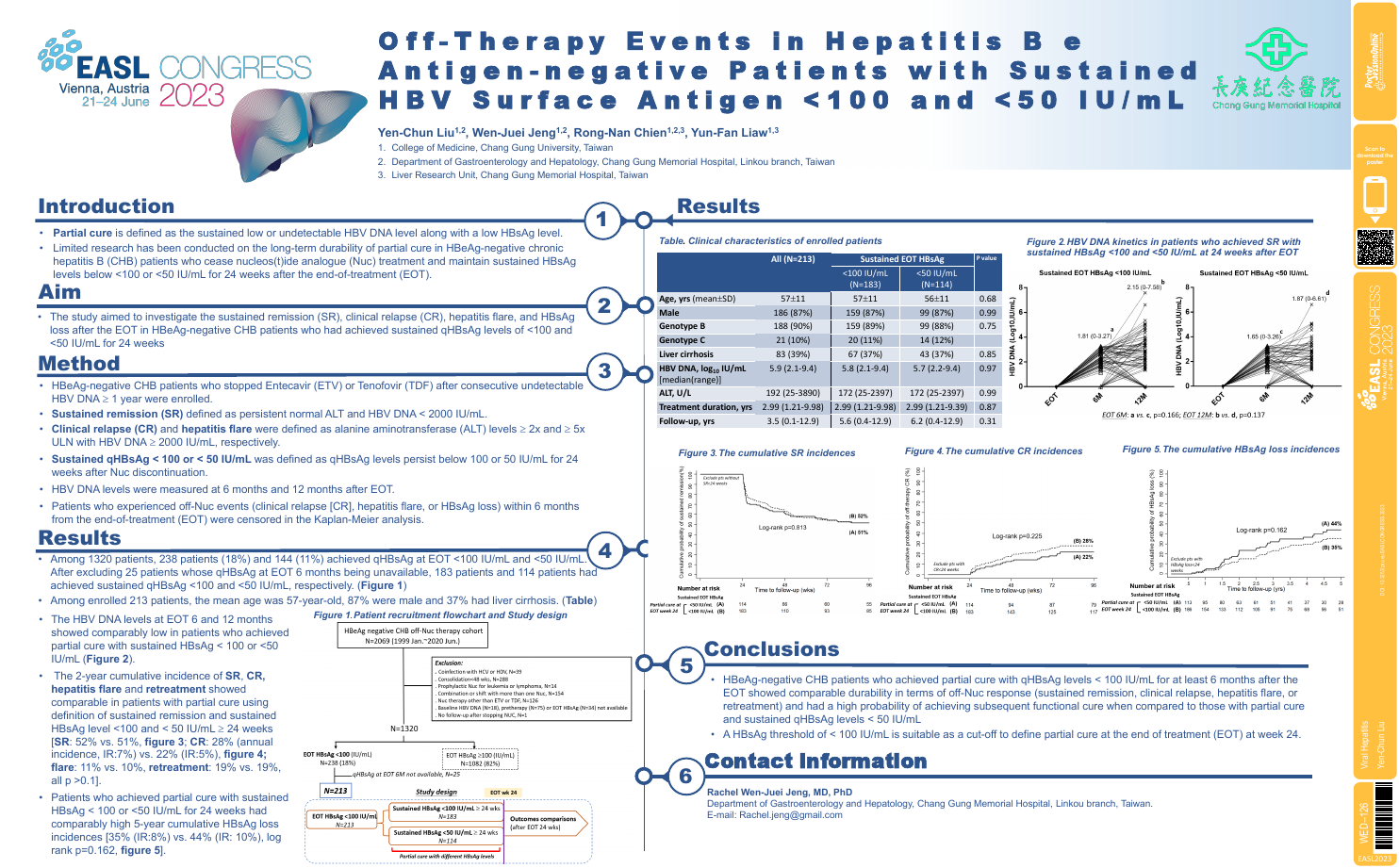
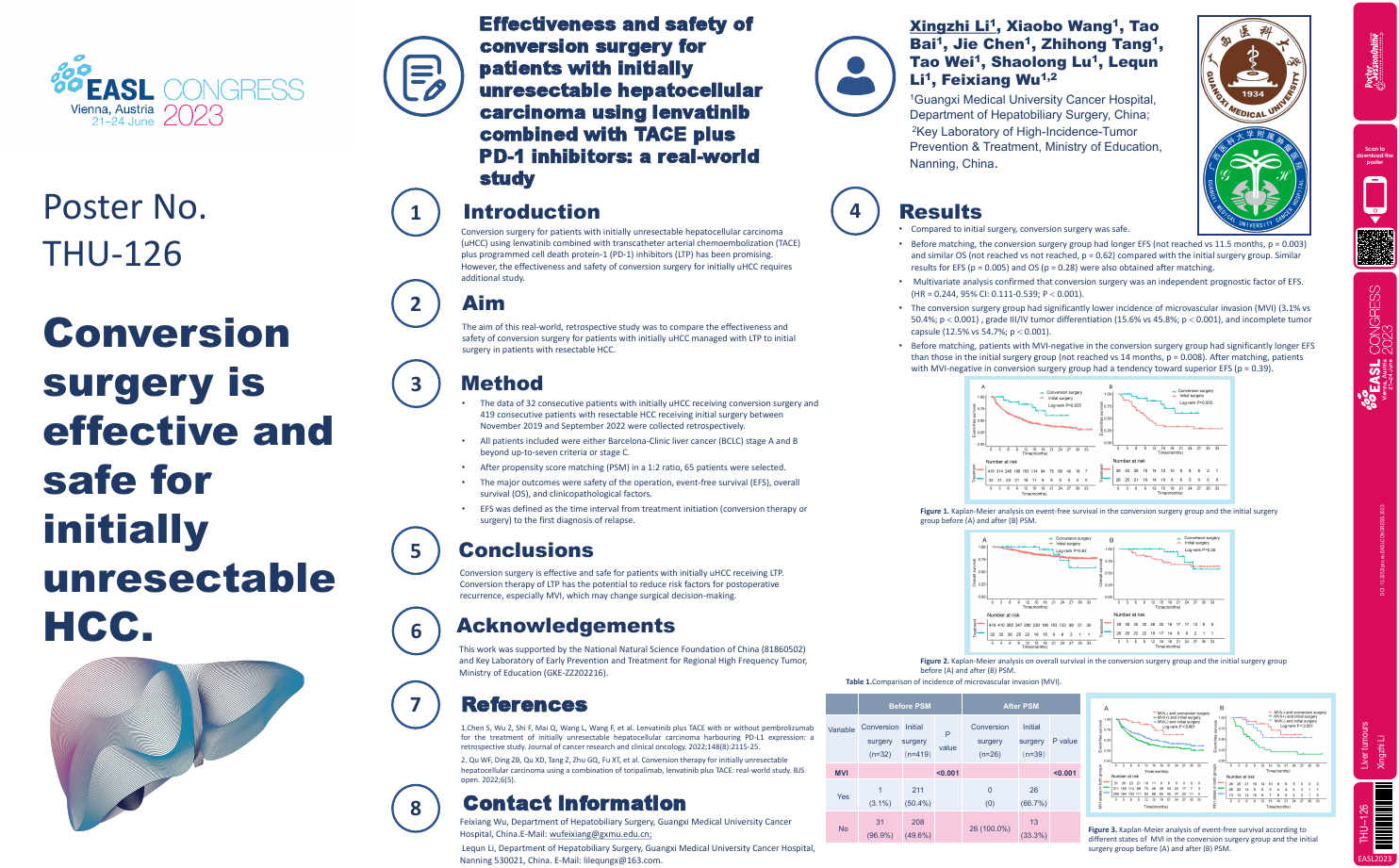
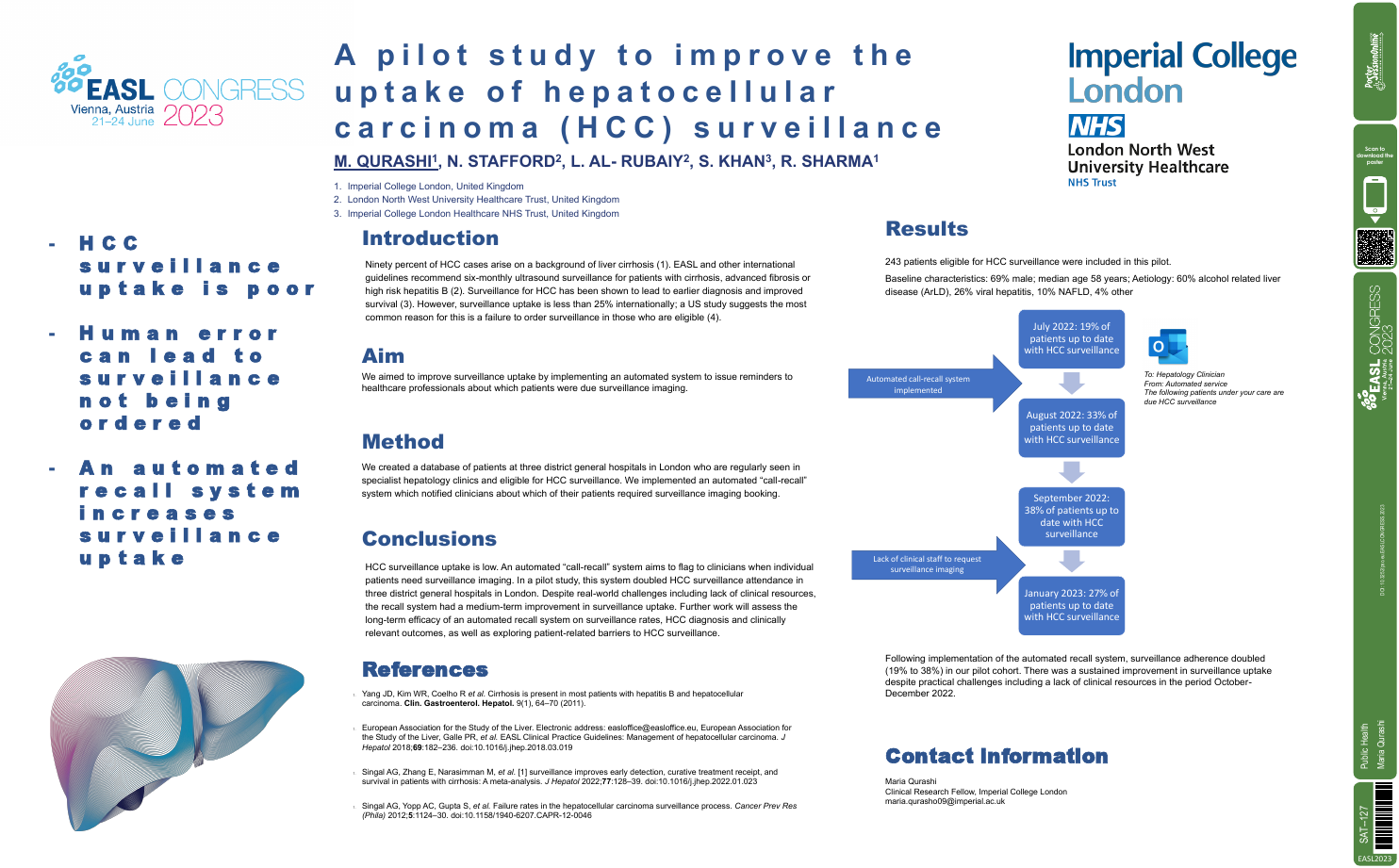
| Socio-economic disparities drive the pre.. | Zobair Younossi .. | .. | Public Health.. | - - | |
| Efficacy and safety of atezolizumab plus.. | Leonardo Stella .. | L. STELLA, C. HOLLANDE , S. SI.. | Liver tumours.. | - - | |
| One step closer to the goal: mobile Info.. | Tatjana Reic .. | Magda Pletikosa Pavic, Diana N.. | Public Health.. | - - | |
| HBsAg seroclearance decreases risk of he.. | Terry Cheuk-Fung Yip .. | .. | Viral Hepatitis.. | - - | |
| Non-alcoholic fatty liver disease preval.. | Karl Vaz .. | William Kemp, Ammar Majeed, Jo.. | Public Health.. | - - | |
| Late presentation of chronic hepatitis C.. | Tengiz Tsertsvadze .. | .. | Public Health.. | - - | |
| Transarterial chemoembolization and syst.. | Louisa Stern .. | .. | Liver tumours.. | - - | |
| Interim analysis of the ACTION trial: Ca.. | Marco Sanduzzi Zamparelli .. | .. | Liver tumours.. | - - | |
| Multiple vitamin co-exposure and mortali.. | Wang Zilong .. | .. | Public Health.. | - - | |
| Influence of viral load and fibrotic bur.. | Ho Soo Chun .. | .. | Viral Hepatitis.. | - - | |
| The impact of hepatitis D virus infectio.. | Pietro Lampertico .. | Robert Gish, Nancy Reau, Heine.. | Public Health.. | - - | |
| Prevalence and predictors of clinically .. | Zobair Younossi .. | .. | Public Health.. | - - | |
| The impact of Covid-19 on hepatocellular.. | Makuza Jean Damascene .. | Stanley Wong, Mawuena Binka, M.. | Public Health.. | - - | |
| IP10 and anti-HBc can predict virologica.. | Yandi Xie .. | .. | Viral Hepatitis.. | - - | |
| Association of tumor response with survi.. | Tim Meyer .. | .. | Liver tumours.. | - - | |
| HCV screening automation at hospitals le.. | Marinela Mendez .. | .. | Public Health.. | - - | |
| Relationships between education and non-.. | Florian Koutny .. | Aigner Elmar, Datz Christian, .. | Public Health.. | - - | |
| Off-therapy events in hepatitis B e anti.. | Yen-Chun Liu .. | Wen-Juei Jeng, Rong-Nan Chien,.. | Viral Hepatitis.. | - - | |
| Effectiveness and safety of conversion s.. | Xingzhi Li .. | .. | Liver tumours.. | - - | |
| A pilot study to improve the uptake of h.. | Maria Qurashi .. | .. | Public Health.. | - - | |
Abstract
Thunderstorm-related asthma in patients sensitised to olea europaea pollen: twenty emergency department visits for asthmatic symptoms in one single day Losappio, Laura1; Heffler, Enrico2; Falco, Antonio1; Contento, Francesco1; Cannito, Cosimo1; Rolla, Giovanni2 1"Dimiccoli" Hospital, Emergency Department, Barletta, Italy; 2University of Torino - AO Mauriziano "Umberto I", Allergy and Clinical Immunology, Torino, Italy
Background: Associations between thunderstorm and asthma morbidity have been reported in several countries. Common to all epidemics of thunderstorm-related asthma is a significant increase in atmospheric allergen load during and immediately after a thunderstorm. Sensitization to Alternaria species or to grass and parietaria pollens has been suggested to play a key role in thunderstorm-related asthma. The only reported event of thunderstorm-related asthma in Mediterranean area was attributed to sensitization to parietaria pollen.
Method: here we describe a series of 20 patients who presented to Emergency Department in Barletta (94,000 inhabitants), Puglia (Italy) for sudden and severe asthmatic symptoms between May 27th and 28th 2010 (from15:36 to 5:02), immediately after a violent thunderstorm which occurred following a very hot morning (mean temperature: 29°C). All the patients have been subsequently visited by an allergist and underwent allergological work-up which included skin prick tests and a careful clinical history. Local pollen counts were available.
Result: Between May 10th and June 10th 2010, 86 Emergency Department asthma visits were recorded, 20 of them during the study day. Patients' mean age was 44.25 +/- 18.5 years (range: 9-81), 8/20 females, 2 smokers, 16 with a previous history of known respiratory allergy. Only two patients regularly took anti-asthma drugs. All 20 patients were sensitized to Olea europaea pollen, 7 of whom were monosensitized. Ten patients were sensitized to grass, 7 to parietaria, 5 to compositae, 5 to cypress, 5 to house dust mites, 3 to dog and 1 to cat danders. No patient was sensitized to Alternaria. Mean pollen count was 17 granules/m3 for Olea europaea, 6 granules/m3 for grass pollen.
Conclusion: This is, in our knowledge, the second epidemic of thunderstorm related asthma described in Mediterranean area and the first one in which sensitization to Olea europaea played a key-role. In conclusion, our report indicates that thunderstorm asthma may involve different allergens (not only fungal spores and grass or parietaria pollen) in different geographic areas, depending on the seasonality of thunderstorms and allergenic pollen.